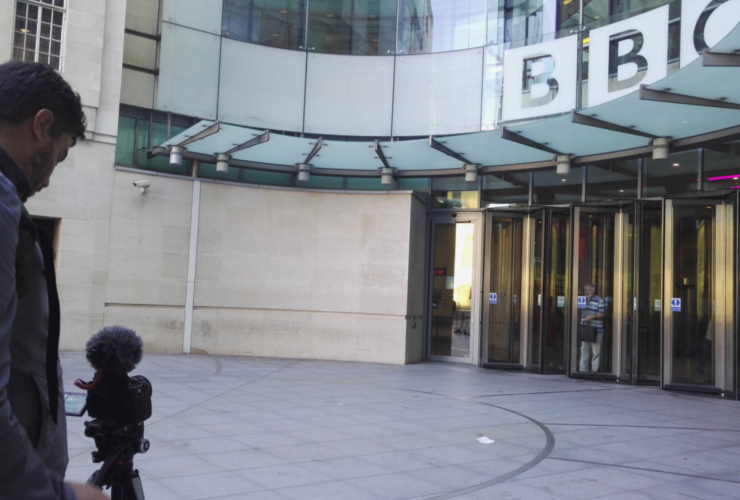Newsrooms in the United Kingdom have implemented different formal and informal peer support systems to help their journalists better cope with online harassment.
The International Press Institute (IPI) is conducting a fact-finding mission to the UK this week as part of its OnTheLine project, which explores the measures media organizations have introduced in the newsroom to tackle online attacks against journalists. The measures collected will later be shared on an online resource platform.
During the first two days of its visit, an IPI team discussed best peer-support practices with various media organizations, including the BBC, The Guardian and Reuters. While several UK newsrooms have put in place formal training systems to offer peer support, journalists themselves have also come up with informal ways to share the burden of online attacks. Overall, peer support mechanisms aim to make sure that no one is left to suffer in silence.
Some initial notes on formal peer support systems in UK newsrooms:
– Newsroom staff can take a voluntary trauma risk management (TRiM) training to be able to monitor and manage colleagues who have been targeted with online harassment. Trained staff members are then able to have a structured conversation with the targeted journalists about changes in their eating, sleeping or alcohol consumption habits to assess and measure what impact the harassment has had on them. The targeted journalists are walked through ways to come to terms with the trauma and directed to health care if needed. The first discussion session should take place within 48 hours after reporting the incident, with a follow-up one month later. The goal of this system is to avoid post-traumatic stress disorder.
– Another peer support system involves “mental health first aid” training, which provides staff members the knowledge to recognize warning signs of mental health issues and to start conversations with colleagues affected by online abuse and threats.
– In some newsrooms, digital and social media editors regularly meet with different news teams to have a “health check” on their work related to social media. These checks every two to three months give the teams a possibility to bring up issues that they face in their everyday work and are a way of communicating that there are support mechanisms in place whenever needed.
– Newsrooms have implemented reporting tools, such as a special email address to report online harassment, through which help is available 24/7.
– Targeted journalists are offered the chance to let someone else from their newsroom read the abusive messages and to monitor their accounts so that they can avoid being exposed to attacks.
And some findings related to informal peer support:
– Many journalists spontaneously discuss online abuse with their colleagues who experienced it previously and talked about it openly. These experts-by-experience can also be invited to talk about the issue with new employees or share their stories on the company’s intranet.
– Teams of journalists who face a lot of abusive comments or images and work in different locations use WhatsApp groups to talk about things they encounter in their everyday work and to share the burden in a humorous way. However, journalists say it’s important to be able to mute these conversations when needed.
See also:
